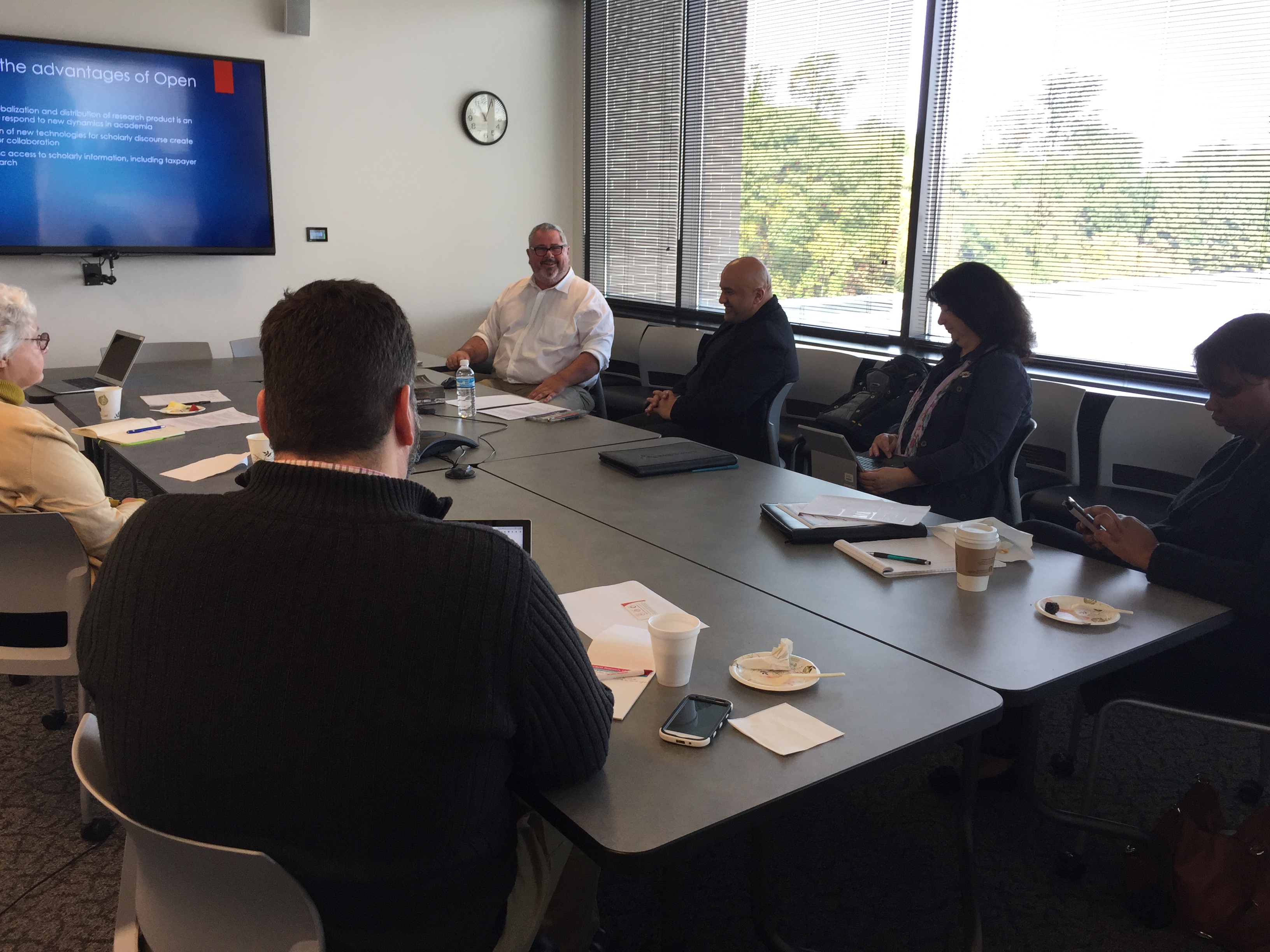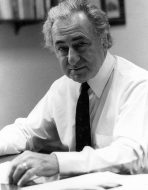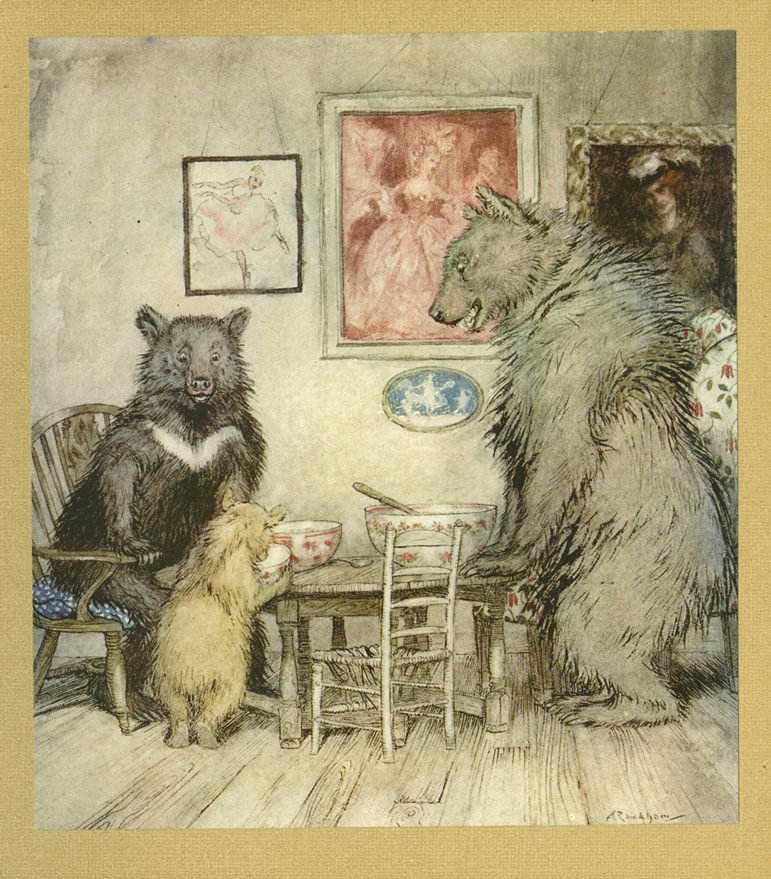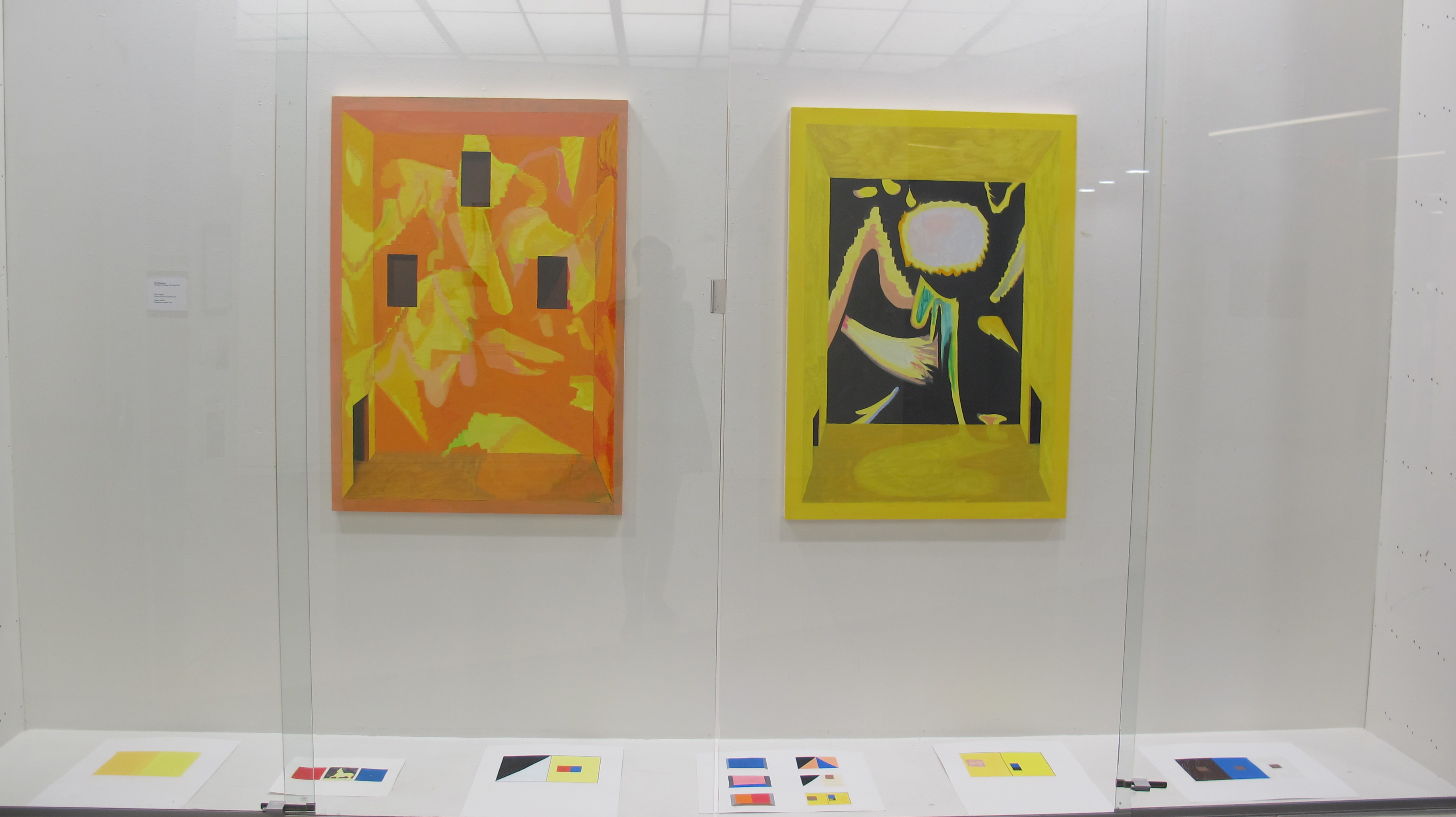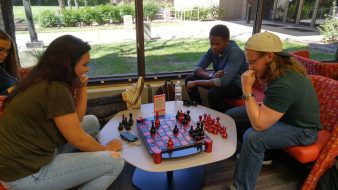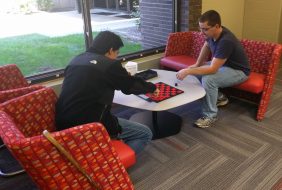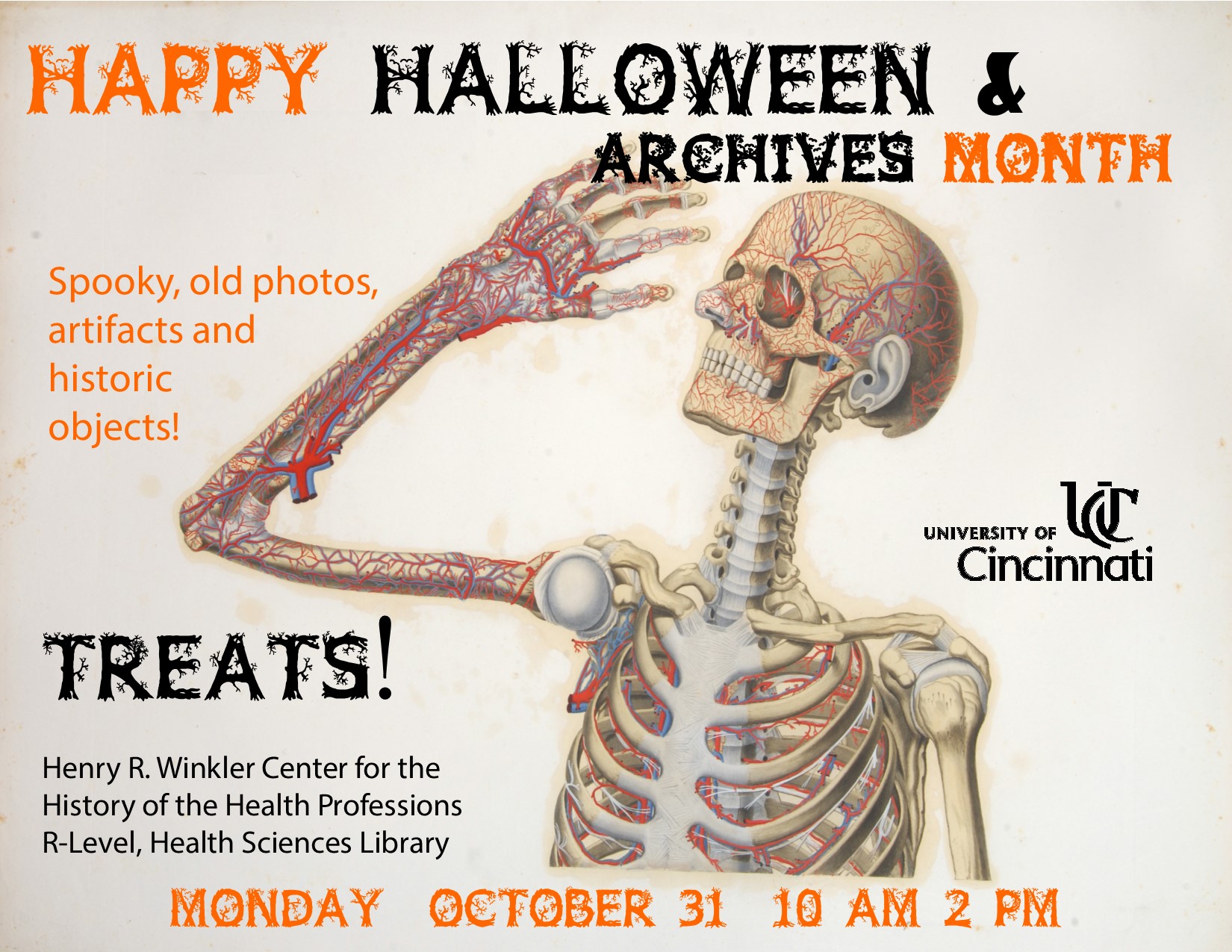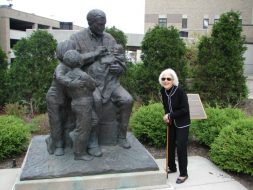
Heloisa Sabin at the Albert B, Sabin memorial at Children’s Hospital, 2010. Courtesy of the Winkler Center for the History of the Health Professions, University of Cincinnati, Cincinnati, Ohio
Heloisa Sabin
1917-2016
The Winkler Center was saddened to hear of the passing recently of Heloisa Sabin. Born, Heloisa Dunshee de Abranches, she married famous medical researcher and developer of the oral polio vaccine, Albert B. Sabin, in 1972.
Before her marriage to Dr. Sabin, she was women’s editor of a family-owned newspaper, Jornal do Brasil, in Rio de Janerio where she worked for 16 years. The Jornal was the largest daily newspaper in Rio at the time. She also studied at Columbia University in New York and held a law degree.
Asked what it was like being the wife of the famous research professor and virologist, “exciting,” she said. “I thought he was fascinating before I met him and I still think he is.” “Life with Dr. Sabin is certainly different from any other kind of life I could lead,” Mrs. Sabin asserted. “We are traveling all the time and I get to meet a lot of people who really enrich my life. Not only do we travel in the United States but we also travel in Europe and other countries where my husband has speaking engagements.” The Sabins not only traveled to numerous locales, but also resided at various times in New York, Washington D.C., Charleston, SC, Switzerland and Israel.
Heloisa became a steward of the Sabin legacy and a tireless activist in later life. Upon Albert Sabin’s death in 1993, she spent a majority of her time speaking out and fundraising to continue her late husband’s work in the study and improvement of immunizations, specifically in regard to Polio. In addition, she became a strong proponent of the use of animals in medical research, as the Polio vaccine her husband developed would not have been so successful had it not been for data gleaned from animal testing. She was a founding member of the Albert Sabin Research Institute, which advocates for global immunization to end all vaccine-preventable diseases.
She visited UC frequently, promoting ways to memorialize her husband’s accomplishments in the place where they occurred. Working with administration of what was then the Cincinnati Medical Heritage Center (now the Winker Center), she saw to it that Albert B. Sabin’s professional and personal papers came here in 1993.
In addition to her meaningful charitable contributions to the University, Mrs. Sabin played a role in the naming of the Children’s Hospital Sabin Center, Albert Sabin Way, and the Hauck Center for the Albert Sabin Archives. She also influenced the development of the Sabin exhibit in the Vontz Center and the Ohio Historical Marker dedicated to Sabin at the Vontz’s entrance.
The Winkler Center will miss Heloisa as will all those whose lives she touched.
If you are interested in researching the Sabin collection at the Winkler Center for the History of the Health Professions, please call 513.558.5120 or email chhp@ucmeil.uc.edu. To view an online inventory of the Albert B. Sabin Papers please visit Winkler-Albert B. Sabin Papers.
Works Used
Hembree, Linda. “Life with Noted Researcher Fascinating.” Spartanburg Herald (Spartanburg, SC). Wednesday, 3 December 1975. P. B3.
Marine, Steve. Correspondence with UC Foundation, Donor Files, Winkler Center for the History of the Health Professions, University of Cincinnati,
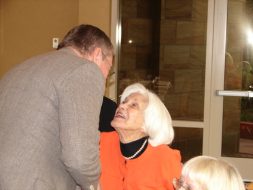
Heloisa Sabin greets visitors at the 50th Anniversary of Sabin Sundays in 2010. Courtesy of the Winkler Center for the History of the Health Professions, University of Cincinnati, Cincinnati, Ohio
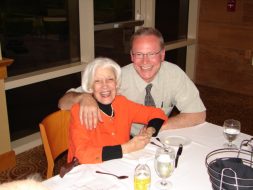
Sabin with Executive Director of the Winkler Center, Steve Marine, at the 50th Anniversary of Sabin Sundays, 2010. Courtesy of the Winkler Center for the History of the Health Professions, University of Cincinnati, Cincinnati, Ohio


